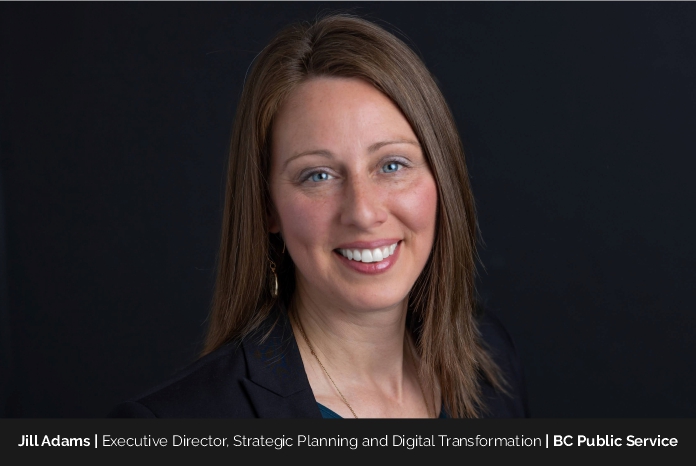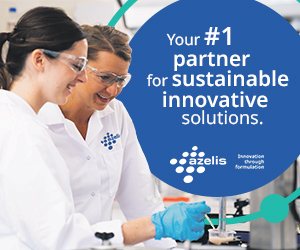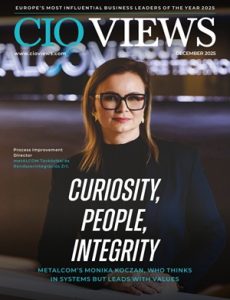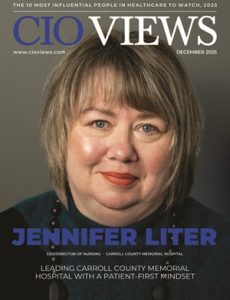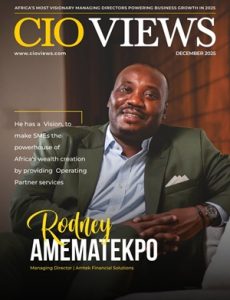In an era of rapid digital transformation and heightened citizen expectations, leaders who can deliver both innovation and accountability are indispensable. Jill Adams has built a distinguished career on this delicate balance, integrating strategic planning, service modernization, and transformational people leadership to drive meaningful change. Her story is one of determination, creativity, and an unwavering commitment to challenging the status quo in pursuit of superior outcomes. Along the way, she has demonstrated that strong leadership rejects the status quo—it imagines what should exist and begins by reframing problems through multiple lenses.
Defining Visionary Leadership
For Jill, visionary leadership in the public sector transcends mere project management or technological upgrades; it is about cultivating conditions. Properly supported and purpose-driven employees will challenge how things are and how they ought to be, seeing beyond immediate constraints to imagine serving people better, faster, and more equitably. As she puts it, “it involves handing good people possibility so they can do greater things than they expect of themselves – when trusted and empowered, they will rise to the occasion far more often than not.”
For her, leadership is people-focused, value-driven, and solutions-obsessed. “High-quality visionary leadership is the most important predictor for success in digital transformation,” she asserts. Leaders must be able to look both inward and outward, staying abreast of trends beyond their immediate fields to anticipate challenges before they arise.
Lessons from Key Turning Points
Jill’s leadership journey has been shaped by challenges, mentors, and pivotal acts of risk-taking. She acknowledges that imposter syndrome often makes her question her abilities, and she now sees it in others and pushes high potentials to take risks for greater confidence. One early supervisor she reflected on entrusted her with a significant challenge, giving her no option but to lead it. The result was a program that garnered both local and national attention, exceeding expectations and bolstering her confidence.
These experiences taught her three enduring lessons. First, the right ideas sometimes arrive at the wrong moment, but flexibility, determination and the support of the right champions can ultimately bring them to fruition. Second, the work itself is less important than the team. Third, curiosity scales better than certainty, particularly in large and complex institutions. These insights guided her transition from analyst to senior leadership roles.
Reimagining Strategic Planning
Jill treats strategic planning as a living system, not an annual exercise. She pairs a clear direction with short delivery cycles, open performance data, and user‑centred design: start with people’s needs, set the north star, then deliver and learn. She insists performance measurement be designed in from day one: define success, establish baselines, and track outcomes continuously. Without evidence, transformation success cannot be declared. She loves guiding teams with the quote, “If you don’t know where you’re going, any road will do.” Purpose and agility aren’t opposites: know the outcomes you’re after, then stay open to what users teach you. That is how plans stay relevant, money is well spent, and services earn public trust.
For her, strategy is inseparable from delivery. While leading the Digital Identity Strategy, she was simultaneously involved in capital projects that first adopted the strategy’s authentication methods—letting real‑time implementation sharpen the policy, and the policy standardize future builds. The payoff: practical guidance, reusable components, and a faster coordinated delivery across sector projects.
Overcoming Obstacles to Digital Transformation
Digital transformation is rarely smooth. Jill has navigated challenges ranging from colleagues crumbling under pressure to the slow pace of change in large hierarchical systems. She acknowledges the unglamorous foundational work, such as integrating disparate systems or addressing data quality issues, that underpins significant progress. To maintain stakeholder interest, she uses mock-ups or dashboards to illustrate future outcomes while teams worked on the essential groundwork.
She also highlights the importance of diplomacy when services need to be rebuilt from the ground up. By celebrating every bit of success and positioning the owners as champions, she has managed delicate transitions without alienating key partners. “Persuading others by simply saying ‘trust me’ isn’t always sufficient,” she notes. Instead, she relies on data, evidence, and small but unmistakable gains to sell people on ideas.
Balancing Work and Life through Integration
While Jill admits she is not naturally inclined to make space for much downtime, she has developed her own version of work-integration to achieve peak performance. She channels her energy into a diverse array of activities, including rehabilitating heritage homes, designing and installing urban food forests, and practicing capoeira. “Engaging different parts of the brain with different competencies throughout the week enables us to get more done,” she explains. Commuting to work by bike for nearly three decades, staying physically active, and prioritizing family time are habits that sustain her high-level productivity. Time with her 5-year-old keeps priorities in perspective and her dynamic lifestyle keeps her energized and alert.
She also encourages her teams to set boundaries, schedule restorative time, and experiment with new work styles such as compressed weeks. These habits, she believes, are crucial not only for personal well-being but also for organizational effectiveness. “What works for them, works for me. And I work for them, not the other way around. This is an important mindset to settle into for all kinds of good reasons.”
Developing the Next Generation of Leaders
Coaching and mentoring is central to Jill’s leadership philosophy. She encourages emerging leaders to discover their strengths, believe in their natural abilities, and find ways to use their unique talents every day. Coaching, in her view, is about eliciting answers rather than dictating them. “I will not assume to have all the answers, but I can ask good questions. Openness and humility speeds learning, creates trust, and change happens at the speed of trust,” she said, borrowing from Stephen Covey. If you want progress, prioritize building trust and mutual respect with your team members. You either cultivate trust, or you have people not focused on the right things, or even working against you.
Her legacy is one where leaders strive to leave systems improved. She promotes constructive dissent, because for her, innovation begins with curiosity, courage, and the willingness to challenge long-established processes that no longer serve. It’s a creative mindset and best approached with interdisciplinary, diverse teams.
A Landmark Achievement
Among her numerous accolades, Jill is most proud of spearheading a groundbreaking solution to address drug-impaired driving. Her team collaborated with experts from various disciplines to examine the problem space and develop a digital impairment detection device for roadside use that would replace the breathalyzer. The innovation, that uses AI and machine learning, gained national and international recognition and exemplified her ability to challenge assumptions, trust experts and use evidence to create a globally-leading solution that benefits both citizens and government.
This achievement underscores her belief that reframing problems often unlocks greater solutions. As we know, most notable breakthroughs in human history have been a result of people thinking differently about the problems, not the solutions. By shifting the focus from determining quantities of drugs in the body to assessing safe driving ability, her team not only simplified the problem but also expanded the solution to include additional factors such as fatigue, prescription medications and drug interaction effects.
Preparing for the Future of Public Service
Looking ahead, Jill sees technology as an enabler, not a strategy in itself. AI, automation, digital twins and other tools will matter most when they solve clearly framed problems and deliver measurable public value. “My approach is the reverse of the hype cycle,” she notes. “Frame and re‑frame the problem first, build capacity to think differently, then choose solutions that fit.”
A recent study by METR—covered in The Atlantic—is a timely caution. Even in coding, a domain where AI should excel, experienced developers using AI tools were 20% slower than those without them. That capability–reliability gap shows why adoption isn’t impact by default: AI can speed discovery and scale, but it can also introduce rework, governance costs, and new operating risks if organizations haven’t done the problem‑framing and design work. For Jill, who advised the Premier on technology investment, investment evaluation is a skilled discipline involving system level strategic thinking, risk informed judgement, digital proficiency, and a commitment to ethics, equality, and overall social impact. Diverse teams need to adopt an entrepreneurial mindset, maintain focus on the problem, remain curious and open to pivots, and track cost-to-value. Simply put, the tool must serve the problem, not the other way around.
Her operational vision is fluid, skill‑based teams supported by seamless digital systems—shared platforms, ethical data use, and transparent performance dashboards—so ministries can move talent to priority missions quickly. Efficiency gains must translate into societal benefits: stronger climate resilience, better health outcomes, and more equitable access to services across communities. None of that is possible without people‑first leadership. “Results rise or fall on the quality of our people leaders,” Jill says. “Tenure is not sufficient on its own. We should be seeking out and developing leaders with emotional intelligence, who create conditions for good judgment, safe experimentation, and mutual respect.”
Conclusion
Jill Adams’ experience illustrates how visionary leadership can transform not just organizations but broader systems that serve citizens. Her life is characterized by tenacity, fearless risk-taking, and a rejection of outdated methods when superior options are available. She leads by creating conditions for others to succeed—problem clarity, ethical guardrails, and a cadence of small, steady wins. As governments confront complex challenges, her blueprint is simple and demanding: start with people’s needs, prove value in delivery, scale what works, and keep humility and integrity at the centre.
